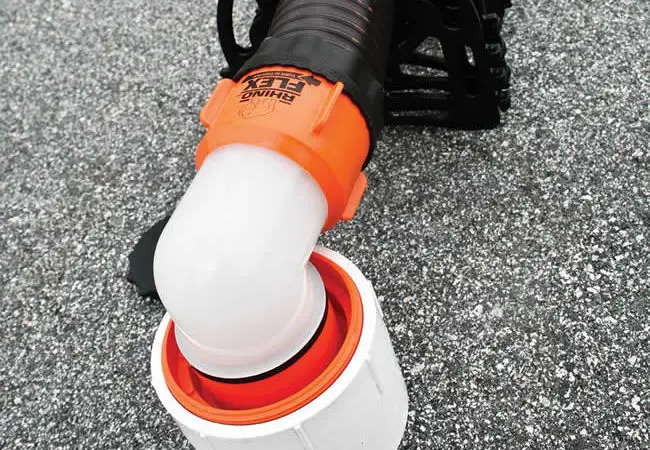When enjoying the freedom of the open road in your RV, having a reliable and efficient way to connect your RV to a septic system is essential. While many RV parks and campgrounds provide temporary sewer hookups, having a permanent connection to a septic system can offer convenience and peace of mind. In this article, we will guide you through the steps to permanently hook up your RV to a septic system.
Step 1: Check Local Regulations and Obtain Permits
Before starting any installation process, it is crucial to check your local regulations regarding septic systems and RV hookups. Some areas may have specific codes and restrictions you need to adhere to. Additionally, you might need to obtain permits from local authorities to ensure compliance.
Step 2: Select the Proper Connection Point
The first step in the actual installation process is determining the best location for your RV’s connection to the septic system. Ideally, this should be a point that allows easy access for both connecting and disconnecting your RV’s sewer line.
Step 3: Dig the Trench
Once you have chosen the connection point, you will need to dig a trench from your RV’s location to the septic tank. The trench should slope downward slightly to allow for proper drainage. It is important to dig the trench deep enough to prevent freezing during colder months.
Step 4: Install the Plumbing
Next, you will need to install the necessary plumbing components to connect your RV to the septic system. This includes a pipe from your RV’s sewer outlet to the septic tank, with a watertight connection at both ends.
Consider using PVC pipes for their durability and resistance to corrosion. Ensure that all connections are secure and do not have any potential leak points.
Step 5: Create a Cleanout Access Point
In case of any clogs or maintenance needs, it is advisable to include a cleanout access point in your permanent RV septic hookup. This will allow easy access to clear any blockages or perform necessary maintenance without disrupting the overall system.
Step 6: Test for Proper Functioning
Once the installation is complete, it is essential to test the system for proper functioning before regular use. Run water through your RV’s plumbing system and check for any leaks or drainage issues. It is also recommended to have a professional inspect the setup to ensure compliance with local regulations and proper functionality.
Maintenance Tips for Your Permanent RV Septic Hookup
Now that you have successfully installed a permanent hookup for your RV to the septic system, it is important to maintain it properly to avoid any problems or inconvenience. Here are a few maintenance tips to keep in mind:
- Regularly inspect and clean the sewer lines to prevent any buildup or clogs.
- Use biodegradable and RV-safe toilet paper to avoid potential blockages.
- Avoid disposing of any harsh chemicals or oils down the drains, as they can disrupt the septic system’s natural balance.
- Consider using enzymatic treatments to promote healthy bacterial activity in the septic tank.
- During colder months, insulate the exposed parts of the plumbing system to prevent freezing.
By following these maintenance tips, you can ensure the longevity and proper functionality of your permanent RV septic hookup.
Frequently Asked Questions On How To Permanently Hook Up Rv To Septic
How Do I Connect My Rv To A Septic System?
To connect your RV to a septic system, use a durable sewer hose and securely attach it to the RV drain outlet, then connect the other end to the septic system inlet.
What Equipment Do I Need To Hook Up My Rv To A Septic System?
To hook up your RV to a septic system, you’ll need a sewer hose, hose clamps, a clear elbow adapter, gloves, and some RV-safe toilet paper.
Can I Use A Regular Garden Hose To Connect My Rv To A Septic System?
No, it is not recommended to use a regular garden hose for connecting your RV to a septic system. A dedicated RV sewer hose is designed for this purpose and is more durable and safe to use.
How Often Should I Empty My Rv Septic Tank?
It is advisable to empty your RV septic tank when it reaches about 2/3 full to prevent any potential backups or leaks. Regular maintenance is crucial to ensure proper functionality.
Are There Any Safety Precautions I Should Take When Hooking Up My Rv To A Septic System?
Yes, it’s important to wear gloves and use proper sanitation measures when handling the sewer hoses and connections. Always follow the manufacturer’s instructions and take necessary precautions to avoid any potential health hazards.
Conclusion
Having a permanent hookup for your RV to a septic system provides convenience and peace of mind while on the road. By following the steps outlined in this article and adhering to local regulations, you can easily install a reliable and efficient connection. Regular maintenance will help keep the system running smoothly for years to come, allowing you to fully enjoy your RV adventures without worrying about sewer connections.
